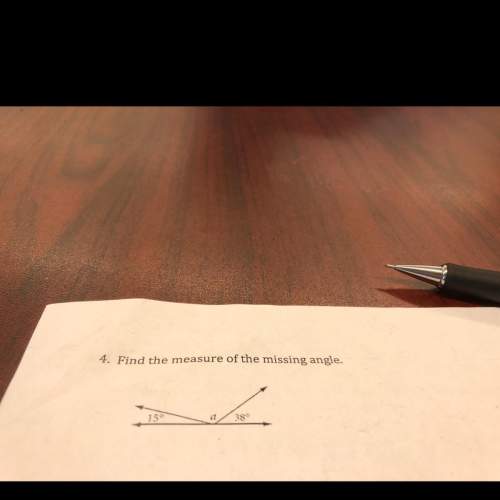
Mathematics, 28.09.2019 12:00 chloeethoma24
B. henry lives 95 km from work. how many kilometres does he drive to and from work each week?
c. henry uses 9 litres of fuel for each trip. (18 litres per day ) how many litres of fuel does he use each week?
d. if he pays 120 cents per litre, how much does it cost to drive to and from work each week? remember to divide your answer by 100 to convert the cost to dollars and cents.

Answers: 1
Another question on Mathematics

Mathematics, 21.06.2019 14:30
Which functions are even? check all of the boxes that apply. f(x) = x4 – x? f(x) = x2 – 3x + 2 f(x) = (x - 2) f(x) = x done
Answers: 3

Mathematics, 21.06.2019 22:00
The numbers on a football field indicate 10 yard increments. you walk around the perimeter of a football field between the pylons. you walk a distance of 30623 yards. find the area and perimeter of the indicated regions. write your answers as mixed numbers, if necessary. a. one end zone: perimeter: yd area: yd2 b. the playing field (not including end zones): perimeter: yd area: yd2 c. the playing field (including end zones): perimeter: yd area: yd2
Answers: 1


Mathematics, 22.06.2019 04:20
When booking personal travel by air, one is always interested in actually arriving at one’s final destination even if that arrival is a bit late. the key variables we can typically try to control are the number of flight connections we have to make in route, and the amount of layover time we allow in those airports whenever we must make a connection. the key variables we have less control over are whether any particular flight will arrive at its destination late and, if late, how many minutes late it will be. for this assignment, the following necessarily-simplified assumptions describe our system of interest: the number of connections in route is a random variable with a poisson distribution, with an expected value of 1. the number of minutes of layover time allowed for each connection is based on a random variable with a poisson distribution (expected value 2) such that the allowed layover time is 15*(x+1). the probability that any particular flight segment will arrive late is a binomial distribution, with the probability of being late of 50%. if a flight arrives late, the number of minutes it is late is based on a random variable with an exponential distribution (lamda = .45) such that the minutes late (always rounded up to 10-minute values) is 10*(x+1). what is the probability of arriving at one’s final destination without having missed a connection? use excel.
Answers: 3
You know the right answer?
B. henry lives 95 km from work. how many kilometres does he drive to and from work each week?
Questions











Mathematics, 29.01.2020 18:43

Chemistry, 29.01.2020 18:43

Mathematics, 29.01.2020 18:43



Biology, 29.01.2020 18:43




Chemistry, 29.01.2020 18:43




